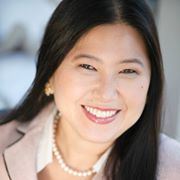Plastic Surgeon and Breast Specialist Dr. Constance Chen Offers Practical Tips.
NEW YORK (PRWEB) July 29, 2020
Breast reconstruction has come a long way. Advances in surgical technique have made it possible to use a woman’s own tissue to construct a breast that is soft and warm and often very similar to the breast she has lost to mastectomy. This “autologous reconstruction” has become the gold standard in breast reconstruction and can even offer women the possibility of reconnecting nerves to restore sensation to the breast.
“Autologous reconstruction can be performed with excellent results at any time,” says plastic surgeon and breast specialist Dr. Constance M. Chen, “but the best aesthetic outcome is achieved when we do reconstruction in a single surgery at the time of the mastectomy. When the woman awakes after surgery, she already has a new breast, which reduces the emotional impact of having lost a breast. However, it is important for women to know from her first surgical consultation that the breast she wakes up with after surgery – whether performed at the time of her mastectomy or later – may not represent the end of breast reconstruction but a giant first step. For most women, breast reconstruction is not a single procedure but requires a process of adjustments until the best possible result is achieved.”
The goal of reconstruction is to restore symmetry to a woman’s body – symmetry to her other breast and proper proportion to the rest of her body. Symmetry is easier to achieve when both breasts have been removed and are being reconstructed at the same time (bilateral reconstruction). When reconstructing one breast (unilateral reconstruction), it can be more difficult to match the size, shape, and position of the “sister” breast and adjustments may be needed to one or both breasts to achieve the desired symmetry.
“We have a wide range of techniques we can use to make the necessary adjustments,” says Dr. Chen. “Each woman will have an individualized plan that may include one or more of these procedures.”
A mastoplexy or breast lift may be performed on the unaffected breast if its natural droop cannot be replicated in the reconstructed breast. A breast lift will remove excess skin and may elevate only the nipple and areola so they are placed higher on the breast or elevate the breast tissue itself so it sits higher on the chest wall. A breast lift will not significantly alter the size of the breast.
A breast reduction on the unaffected breast may be needed to match the size of the reconstructed breast. The procedure will remove excess skin and tissue and position the breast tissue and nipple-areola complex higher on the chest wall. Breast augmentation to increase the size of the unaffected breast will typically involve placing a silicone gel or saline implant under the pectoral muscle.
Fat grafting, which transfers fat from another part of the body to the breast, is very useful for filling small areas to improve size, shape, and symmetry. Fat is removed from the donor site, frequently the abdomen, using liposuction, which suctions fat out through tiny incisions, and injected into the breast. Fat grafting and liposuction may be used on the unaffected breast or to make small corrections to the reconstructed breast.
Abdominal wall repair may be performed if tissue taken from the abdomen to fashion the new breast leaves the abdomen in need of improvements to its contour.
“Adjustments to autologous breast reconstruction are generally made after the initial surgery has healed and other treatments are complete,” says Dr. Chen. “They represent the final steps in a woman’s journey to restore her health and sense of self.”
Constance M. Chen, MD, is a board-certified plastic surgeon with special expertise in the use of innovative natural techniques to optimize medical and cosmetic outcomes for women undergoing breast reconstruction. She is Clinical Assistant Professor of Surgery (Plastic Surgery) at Weill Cornell Medical College and Clinical Assistant Professor of Surgery (Plastic Surgery) at Tulane University School of Medicine. http://www.constancechenmd.com

